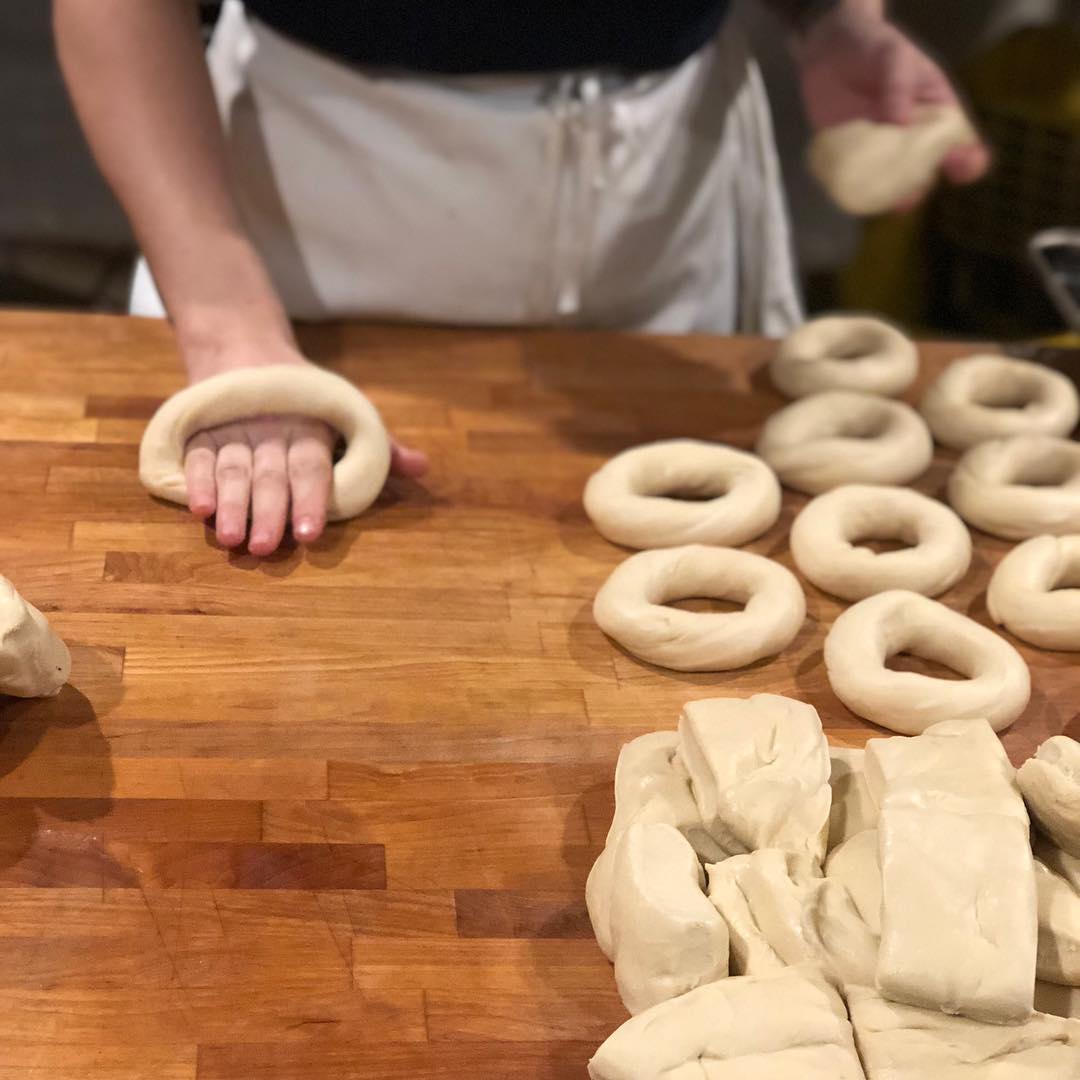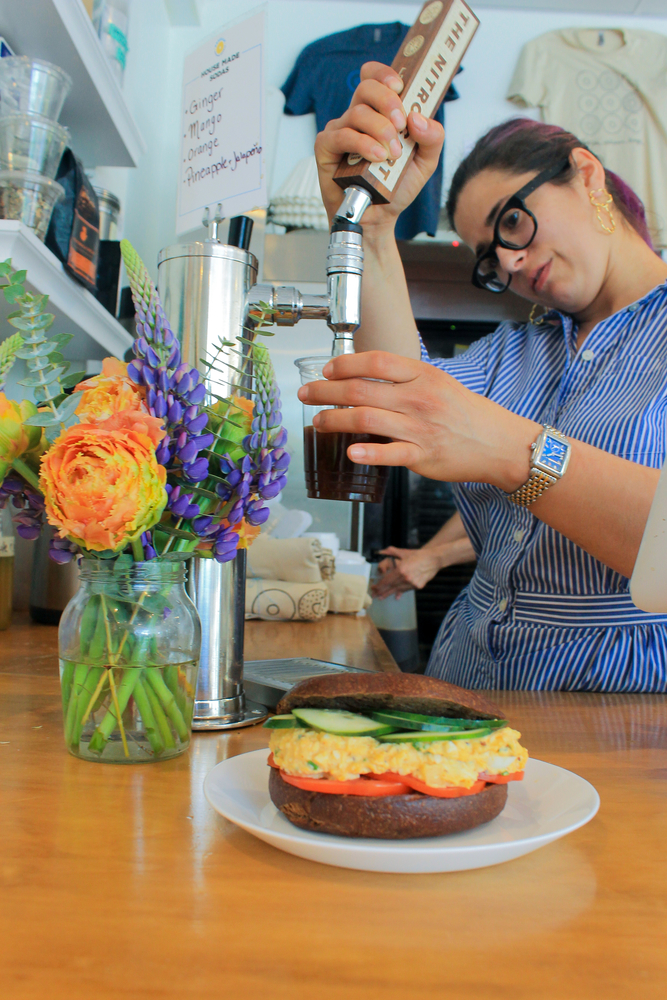Engineering the Perfect Bagel
-
-
slice.mit.edu
- 3

Like many chemical engineers, Milena Pagán ’11 spends a lot of time thinking about things at the molecular level. Only she’s not thinking about chemicals or materials, but about flour, yeast, and malted barley. As the owner of Rebelle Artisan Bagels in Providence, Rhode Island, Pagán is taking the MIT approach to crafting the best bagel.

Although always passionate about cooking, Pagán admits that she never had a special affinity for bagels. But when a new job moved her to Providence—a city she says “lacked a good bagel experience”—that all changed. “I saw this gap in the market,” she says. “So I figured I would make bagels myself.” Kneading, baking, and boiling her own dough, she worked to create the bagels she was craving—with limited success at first.
“That first batch was a disaster,” Pagán says. But she continually tinkered with her recipe and brought her MIT mindset into the kitchen. “I started asking, ‘What about it isn’t good?’ and started doing my research.”
With the help of experimentation and some internet research, Pagán created what she believes is the perfect bagel—one with “the right amount of crunch, a soft and chewy interior, and deliciously malty crust”—and left her full-time corporate job to launch her own bakery.
Opening in 2017, Rebelle Artisan Bagels quickly became a neighborhood favorite. Pagán says some of her customers come in simply out of curiosity—wanting to learn more about the MIT engineer- turned- baker. But she says her new career is an excellent application of her Course 10 degree. “When you operate at the scale we do, you really have to understand what’s going on at the molecular level,” she says. “My success isn’t based on how good of a baker I am, but how good of a problem solver [I am.]”
Pagán’s bagel experiments continue as she tests out menu items and bagel flavors—with a new wildcard bagel each week. “It’s never dull and if I’m feeling the creative juices flowing I just go in the kitchen and work on an idea,” she says.
Now back on campus pursuing her MBA at MIT Sloan—she says she’s already bringing the curricula into her bakery. “I’m thinking, ‘What applications of regression models can I use for my shop? Or ‘Is it possible to predict my sales based on the weather and the time of day?’” she says.
Pagán says that the success of Rebelle Artisan Bagels makes her especially thankful for her time at MIT. “Every time that I go back to MIT I get this sense of gratitude that I was able to do something so wild,” she says, noting that she was on full scholarship as an undergraduate and is now on fellowship at MIT Sloan. “I left a good-paying job to open a bakery. If I hadn’t gotten the education I got at MIT, there’s no way I would have the success that I do.”


Comments
Barry Pressman
Sat, 11/17/2018 10:56am
What about "gluten-free" bagels
You may be Celiac's our only hope. There is no tasty gluten-free bagel so the challenge is for you, Milena, to come up with one. And the market is growing daily. About two percent of the population has celiac disease, but more importantly, a greater percentage have found that wheat is not good for them and so they maintain a gluten-free diet even though they don't have celiac. Finally, you will find out that the pricing of all gluten-free products is usually two or three times higher than regular products.
So there you have it- a way to make a profit and get wonderful feedback and thanks from many folks who can no longer eat a tasty bagel.
Martin Robbins
Sat, 11/17/2018 2:10pm
Thank you
I am far from a bagel expert but, apparently, you have proven that one can reproduce a real, New York bagel outside of New York (not a New York "style" bagel.) You deserve a real thank-you, even if you didn't give your secret recipe away in print.
I moved to San Francisco from New York in 1960 and found there wasn't a decent bagel to be had. After some experimentation by my wife, she came up with a reasonable facsimile but it was only that, reasonable. He best trick was to use potato water. I am not sure whether that is common or not.
When I moved to Denver in 1963, the situation was much the same: not a reasonable bagel in sight. Fortunately, that has changed. There are decent bagels to be found but still, nothing like the real thing. One baker (Rosenberg's) even boasts that he has reproduced New York City water to produce an exact copy but, not really (too much air, not chewy enough, not a good crust.)
If I get to Providence, you can be sure I will stop by your bakery to give it a try.
Martin Robbins
Martin Robbins
Sat, 11/17/2018 2:10pm
Thank you
I am far from a bagel expert but, apparently, you have proven that one can reproduce a real, New York bagel outside of New York (not a New York "style" bagel.) You deserve a real thank-you, even if you didn't give your secret recipe away in print.
I moved to San Francisco from New York in 1960 and found there wasn't a decent bagel to be had. After some experimentation by my wife, she came up with a reasonable facsimile but it was only that, reasonable. He best trick was to use potato water. I am not sure whether that is common or not.
When I moved to Denver in 1963, the situation was much the same: not a reasonable bagel in sight. Fortunately, that has changed. There are decent bagels to be found but still, nothing like the real thing. One baker (Rosenberg's) even boasts that he has reproduced New York City water to produce an exact copy but, not really (too much air, not chewy enough, not a good crust.)
If I get to Providence, you can be sure I will stop by your bakery to give it a try.
Martin Robbins